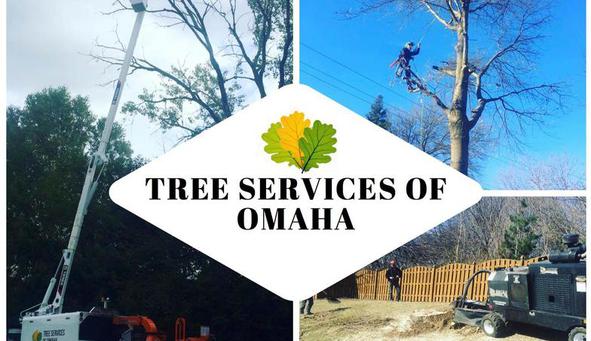Tree Services of Omaha - Omaha, Nebraska
Watering Trees - Tree Care Tips
by David Steg on 10/01/14
Watering Trees
Water is the most limiting factor for tree survival and growth. Trees use water during photosynthesis and lose water during transpiration. Drought conditions can lead to tree decline, making the tree more susceptible to pest problems. Supplemental watering should be part of the tree-maintenance plans, especially during periods of water deficits and in areas where surface temperatures are escalating.
How to Water?
Ideally, watering should begin when soil moisture reaches some critical level. However, most homeowners do not have the instrumentation to measure soil moisture. Thus, precipitation events should be monitored and the soil observed to evaluate when watering is needed. Trees should be watered before they show symptoms of leaf curling or leaf detachment due to a lack of moisture.
The best way to water trees is gradually with a soaker hose or by trickle or drip irrigation. Sprinklers are less efficient, but they are easy to use. Use an organic mulch to conserve moisture and apply water over the top of the mulch. Do not concentrate the water at the base of the tree. Most of the fine feeder roots of trees are located several feet from the trunk. Excessive watering at the base of the tree can lead to pest problems and root diseases.
Where to Water?
Watering should take place beneath the crown of the tree and extending a few feet beyond the drip line of the crown. Trees need not be watered closer than 3 feet to the base of the trunk and not much beyond the drip line. These are the areas generally beneath the foliage and shaded by the tree. Be sure that the water slowly soaks into the soil and does not run off. Use mulch and slow application rates and growth. Grass and other landscape plants adjacent to trees will also benefit from deep-soaking water. Young, recently planted, ball-and-burlap trees also require frequent watering. Since water moves downward more than sideways, application of water should be directly over the planting area or the root ball.
When to Water?
The best time to water is during the evening hours and at night. Trees have a chance to replenish their moisture during these hours when they are not as stressed by hot temperatures. Watering at night allows effective use of water and less evaporative loss.
How Much Water and How Often?
The amount of water used in irrigation will depend on soil texture and structure, temperatures and the amount and timing of previous precipitation. Trees in limited rooting areas (thin soils), in containers or pots, on slopes, adjacent to warmer surfaces and in sandy soils will probably need more water. Trees in heavier soils with greater water-holding capacity will require less water. Over watering these sites often leads to anaerobic soil conditions, leading to root diseases or death.
Water use by trees increases with increasing temperatures. Trees surrounded by pavement or adjacent to other energy-absorbing, increased-temperature surfaces can be 20 to 30 degrees warmer than normal soil surfaces. For every 18- to 20-degree increase in temperature, the amount of water lost by a tree nearly doubles.
Trees should be watered once or twice a week in the growing season if there is limited rainfall. A few, high-volume waterings are more beneficial than many light and shallow waterings. Light waterings encourage shallow rooting, which can lead to more damage during lengthy drought. Once watering begins, it should be continued throughout the drought period when precipitation is limited.
Other Items
Other plants near the tree(s) compete for available water. The competition for water can be severe. Removing some of this competing vegetation from around the tree will reduce moisture stress. Use mulch to conserve soil moisture and prevent weed competition.
Late in the growing season (September) as the days get shorter and the temperatures get cooler, trees are preparing for the winter. Many of the leaves look unhealthy as they curl, become spotty in appearance and begin to change color or discolor. This is a normal part of the aging process as leaves begin to senesce. Watering during this time may be necessary when soils are excessively dry. However, the amount of water and the frequency of watering should be curtailed as the tree does not require as much water for transpiration and photosynthesis.
Summary
More long-term planning and research is needed to develop moisture-efficient landscapes to conserve water. Even so, supplemental watering will assist trees during periods of drought, high temperatures, and other water-loss events.



